A world epidemicCanna virus disease was largely unheard of in years gone by. It burst upon the canna world in the early 2000s. Within a few years it infected cannas in many countries, including Europe, the USA, Israel, Australia, and some countries of the far east. Cannas in many gardens and municipal plantings were thoroughly infected. Many cherished collections were decimated (including ours) and some were destroyed or abandoned. Sadly, many old heritage varieties were lost, some forever. How did it start?In the author's opinion, its rapid advance was due to infections in large commercial productions, particularly in the Netherlands, but also in other countries that are large producers of cannas, such as France, Israel, and the USA. As these diseased plants were sold through outlets such as garden centres and hardware stores, and exported to other countries and sold through their retail outlets, so it spread to the cannas already growing in gardens.
Figure: Diseased canna production in Holland (variety 'Wyoming'). Here is a field of cannas destined for export. Photograph by the author in 1999. Why was it allowed to happen?One may wonder why this state of affairs was allowed to come about. Surely there are laws which prevent the exporting of diseased plants across national boundaries. The answer is that yes there are such laws, but they only apply to food crops, not to "ornamentals" such as cannas. When plants, including cannas, are exported they require a certificate of plant health (known as a phytosanitary certificate). The phytosanitary certificate for the import of cannas is only required to show that the cannas do not carry potato disease! If they carry canna disease then that is quite ok! Where are we now?There is no law against producing diseased cannas, and exporting them to other countries, so many commercial producers of cannas continue to do it. They seem to find a ready market in the sale of disease-ridden dormant rhizomes which are sold as attractive pre-packs. Hence canna virus continues to be an ongoing major problem. Therefore it should be assumed that cannas purchased as rhizomes from hardware stores and garden centres will be infected. In early 2011 we purchased 40 pre-packed canna rhizomes from hardware stores and garden centres. 38 were infected with virus disease (these included rhizomes purchased from all the big multiples, and even from the RHS Wisley Garden Shop). It is possible that the other 2 samples will develop the disease later. Also in 2011, visits to large garden centres and hardware stores to see growing canna plants showed that many plants being offered for sale were already infected.
Diseased canna grown from a rhizome purchased in a hardware store. Plants grown in municipal plantings and traffic schemes are usually infected, and usually look so bad that it is obvious to see the virus while driving or walking past.
Figure: Diseased canna in a London park, August 2011 However, it is not all bad news. There are some conscientious growers who have struggled to eradicate this disease from their stock. Also, there is growing awareness of the problem among gardeners, and it is now not unusual to see cannas in some gardens that are free of the disease. What is this virus?There are 5 viruses which infect cannas, but only one which is causing the present epidemic. This virus has been allocated the name "Canna yellow streak virus" (according to the nomenclature convention, only the 1st word is capitalised), and has the formal designation CaYSV. It was identified and named in 2007 in a scientific paper published in the UK (incidentally, largely from samples provided by the author). It is believed that the virus mutated to cannas from a disease of grass (Johnsongrass virus). How is this virus recognised?The virus doesn't kill plants, but it causes foliage which is disfigured by spots and streaks. Later in the year these streaks turn brown, and the foliage becomes badly distorted with diseased and dead areas. The plants then look very sick. See above photos for examples. Often, canna folk are encountered who are quite oblivious of the fact that all their plants are badly diseased, and they don't realise that their plants would look vastly better if they were healthy. On the other hand, some gardeners are paranoid about canna virus, and mistakenly think that any and every blotch or disfigured leaf is an indication of virus. It is important to be scientific about the identification of virus disease. The early symptoms of canna virus are quite specific. What you are looking for are the yellow streaks which give the virus its name (actually, they are pale green, but look yellow against the background of a green leaf). These streaks run along the leaf veins. They are usually about 3mm wide, and pointed at each end. Sometimes a streak is broken in the middle, and then takes on the appearance of 2 wedges back to back. Often the leaf is also quite speckled. The author often looks for these virus lesions on a newly emerging leaf which has yet to fully unroll. Streaks on such virgin leaves are incontrovertible evidence of virus.
Early stage virus, pale streaks and speckles but no leaf distortion evident. Whenever we see a leaf like this we immediately destroy the whole plant As the disease progresses, leaf distortion and necrosis becomes evident.
Late stage virus, leaf distortion and necrosis are evident (variety 'Ehemannii') Canna virus in flowersSometimes the characteristic streaks of virus are also evident in the flowers. Virus streaks in a flower (variety 'Panache'), shown alongside healthy flower. How is it spread?This disease is spread by the winged aphids (though aphids are rarely seen on cannas). Although it does not spread very quickly through a collection, its spread is relentless. There is no cure and infected plants should be destroyed. The virus is not carried in the soil, or in seed. Can all cannas get the disease?It seems that all canna garden varieties, and maybe all species, are vulnerable to virus disease. Can canna virus spread to or from other types of plants?It doesn't seem to infect any plants except cannas, or to be transmitted to cannas except from other cannas. Is there a cure?There is no cure and infected cannas should be destroyed. When does the disease first appear?Often, the first leaf that grows from a rhizome will show the symptoms of the disease. But sometimes, the plant initially appears to be healthy, and the symptoms appear later in the season. In the author's opinion, cannas need to look healthy for a whole season to be sure that they really are healthy. How do I avoid canna virus?If the cannas in your garden already have virus, destroy them and start again. Never buy cannas as rhizomes, except from a very trusted source. If you are buying cannas as growing plants, look at all the plants that are being sold to make sure that they are all healthy. Do not buy an apparently healthy plant if there are any others in the same batch that are diseased. Watch growing plants and cull any that show symptoms. Further notes on sypmtoms in particular varietiesThe disease is readily identified in green leaf varieties (see photos above). In many bronze leaf varieties it can be difficult to conclusively identify, for example in 'General Eisenhower'. On the other hand, in 'Australia', which also has a very dark leaf, it appears as bright yellow stripes against a chocolate background. It is very easy to see in the variegated variety 'Durban' (syn Tropicanna, Phasion), where the pink stripes in the leaf become broken and change to yellow or green. On the other hand it is often most difficult to identify in the variegated variety 'Pretoria' (syn 'Bengal Tiger') where the leaves seem to take on a "sandy" appearance. Some photos are given below.
Virus in typical bronze leaf variety, streaks & speckles, compared with a healthy leaf.
Virus in 'Australia'. Yellow streaks
Virus in 'Durban' (syn, Tropicanna, Phasion). Pink stripes replaced by green. Virus on left, healthy leaf on right.
Virus in Pretoria, which is not so easy to see as in other varieties. Diseased on left, healthy on right. (More information and photos to be added.) |
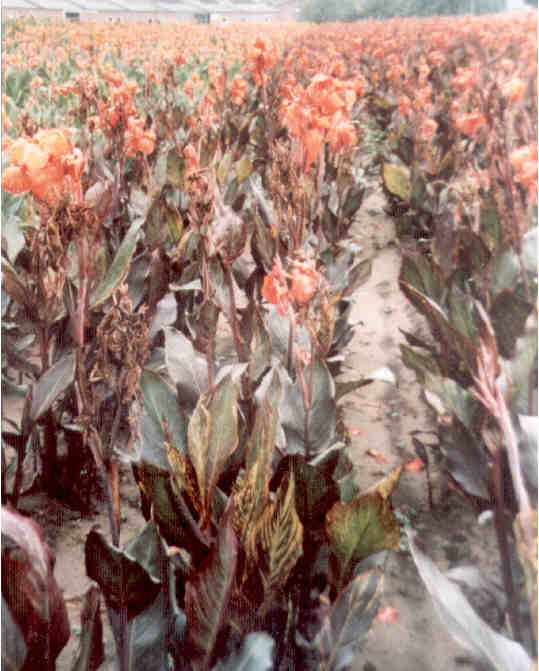

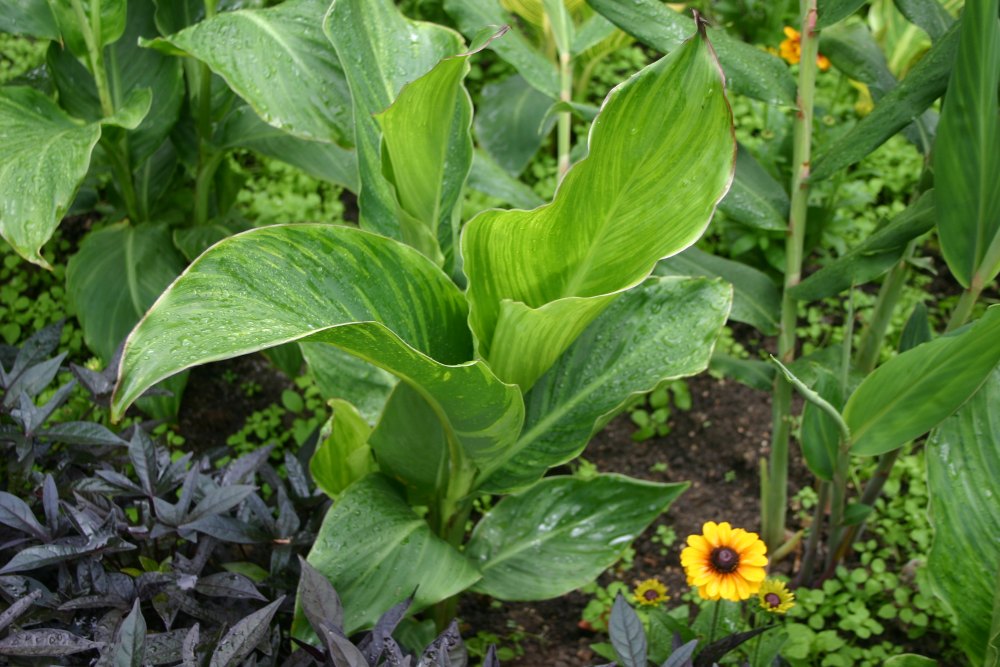
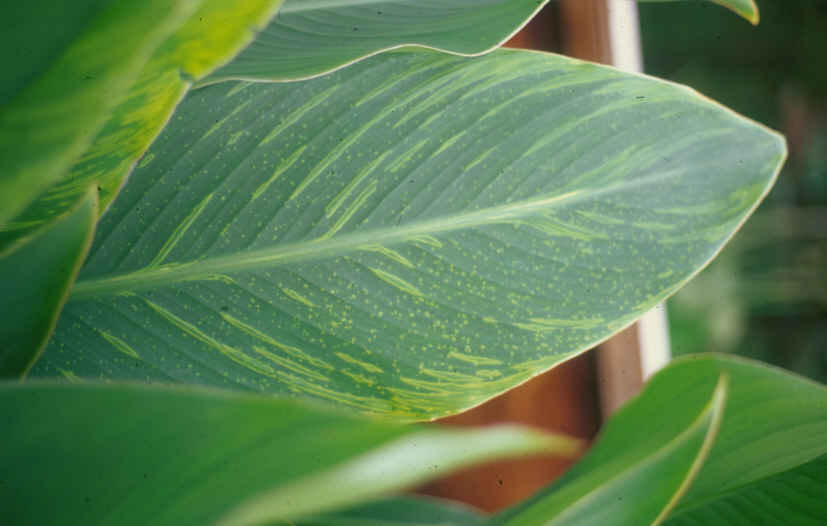
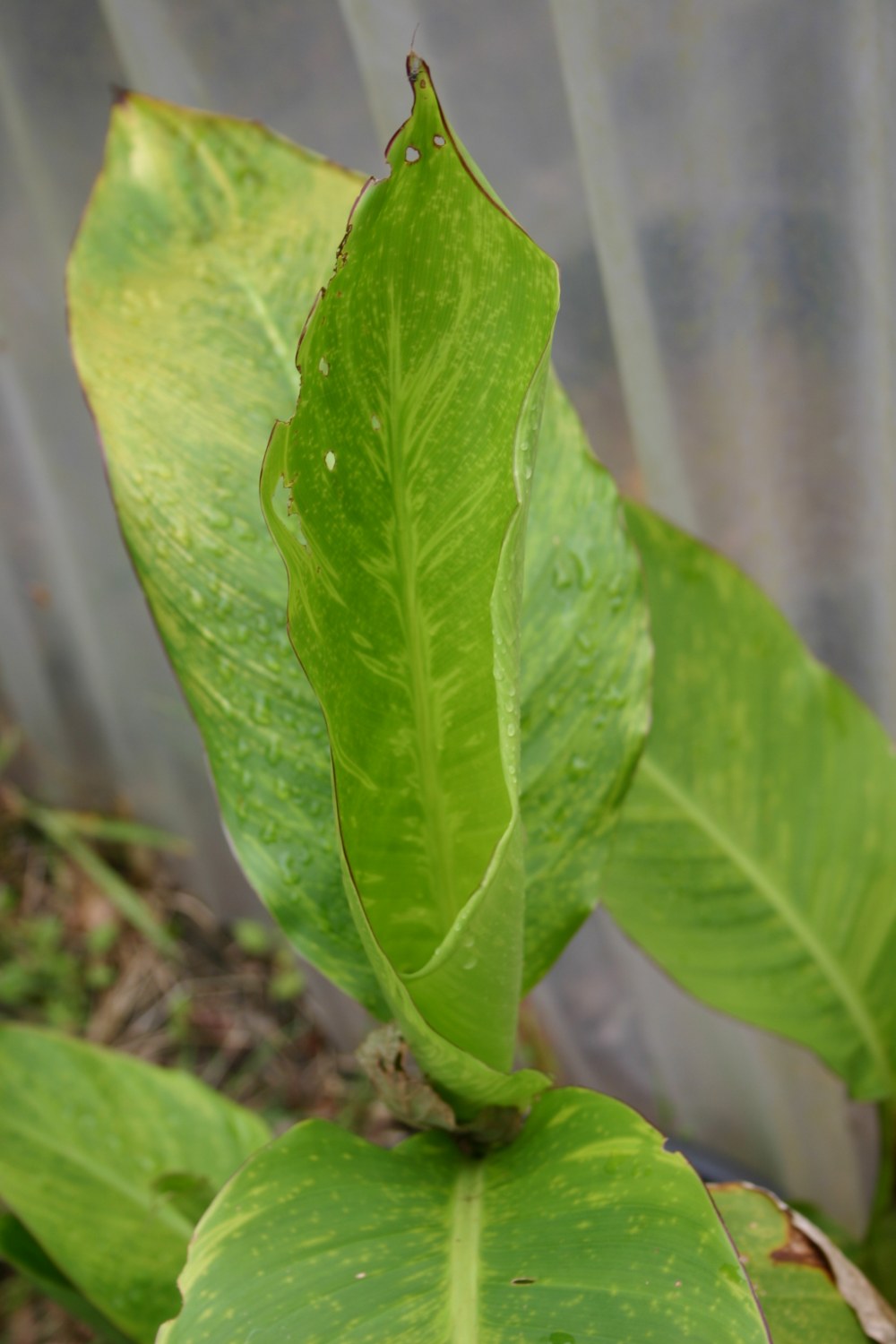
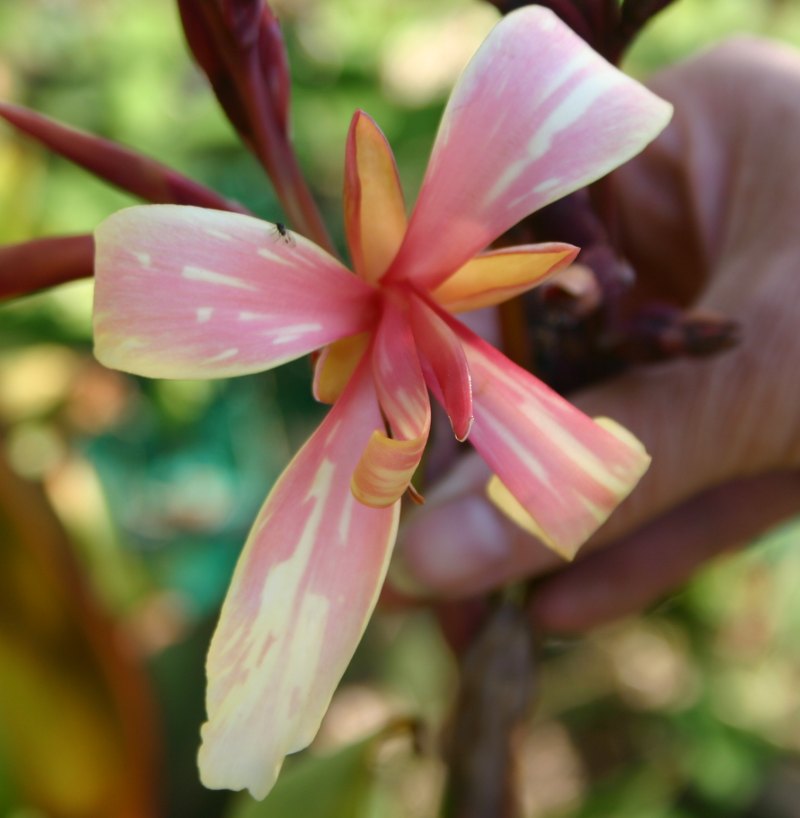
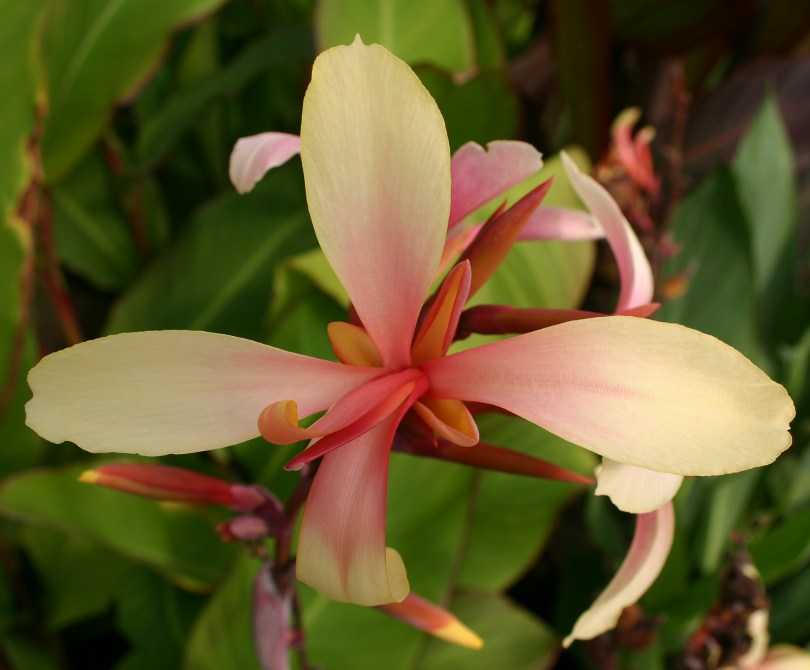
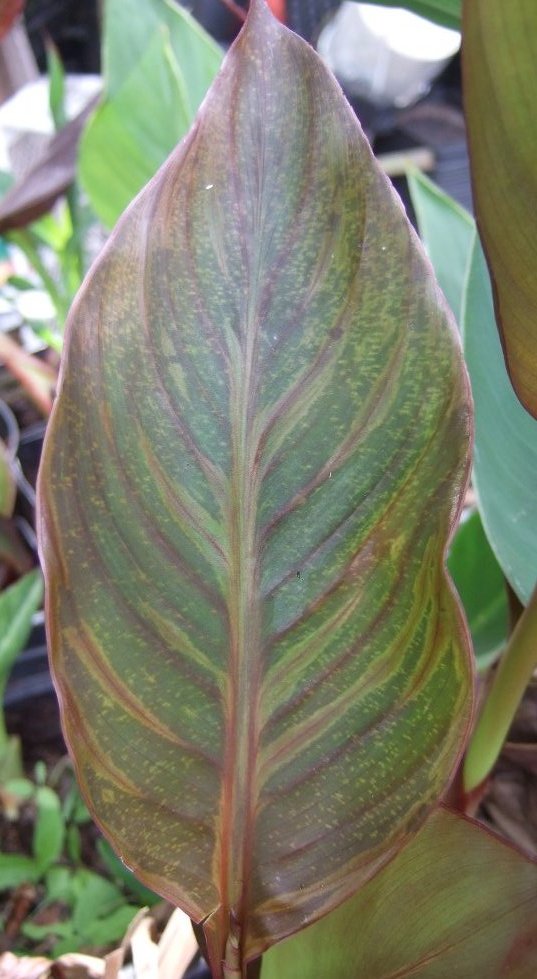 -
- 
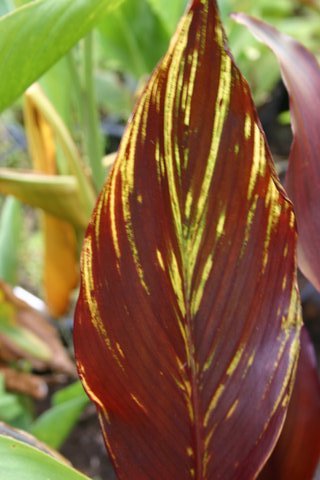 -
- 
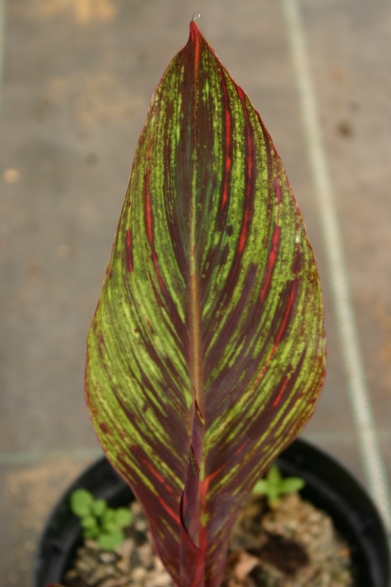 -
- 
 -
- 